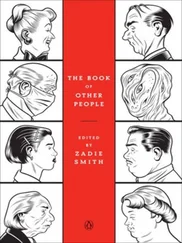Chapter 4
FOOD AND HEALTH

© Corbis
MR MARX PREPARES FOR THE LAND OF NOD
RATING THE EFFECTS OF 51 PERSONAL CRISES
In the 1920s, Dr Walter Cannon began recording connections between stressful periods in a person’s life and the appearance of physical ailments. A decade later, Dr Adolf Meyer compiled a ‘life chart’, which specifically correlated health problems with a person’s particular life circumstances at the time. This process was refined during the 1950s and 1960s and resulted in the creation of the Social Readjustment Rating Scale (SRRS), which ranks 43 life crises on a scale of Life Change Units (LCUs). The ratings were arrived at by researchers who used in-depth interviewing techniques on an international sample of 5,000 people from Europe, the US Central America, Oceania and Japan. Because of the consistency with which marriage was rated as one of the most significant life changes, it was given a value of 50 on the scale, and 42 other life crisis were judged in relation to it. Some cultural differences surfaced (for example, the Japanese ranked minor law violations near the middle of the list and jail terms second from the top), but on the whole there was a remarkable uniformity of results, cutting across all national and socio-economic levels. SRRS supporters contend that there is a direct correlation between annual LCUs and stress-related diseases. One of their studies found that with a ‘mild’ stress level (150 to 199 LCUs in a single year), health problems increased 37% above the average; with a moderate level (200 to 299 LCUs), the increase was 51%; and with a major crisis level (300 LCUs and above), 79% more health problems occurred. The researchers noted that what counted was the cumulative total, not whether the life changes in themselves were positive or negative. The original chart, produced in 1964 by T.H. Holmes and T.H. Rahe, has since been updated to reflect changing values as well as cross-cultural differences.
Rank Life event LCU value
1. Death of spouse/mate 87
2 Death of close family member 79
3. Major injury/illness to self 78
4. Detention in jail or other institution 76
5. Major injury/illness to close family member 72
6. Foreclosure on loan/mortgage 71
7. Divorce 71
8. Being a victim of crime 70
9. Being a victim of police brutality 69
10. Infidelity 69
11. Experiencing domestic violence/sexual abuse 69
12. Separation from or reconciliation with spouse/mate 66
13. Being fired/laid-off/unemployed 64
14. Experiencing financial problems/difficulties 62
15. Death of a close friend 61
16. Surviving a disaster 59
17. Becoming a single parent 59
18. Assuming responsibility for sick or elderly loved one 56
19. Loss of or major reduction in health insurance/benefits 56
20. Self/close family member being arrested for violating the law 56
21. Major disagreement over child support/custody/ visitation 53
22. Experiencing/involved in auto accident 53
23. Being disciplined at work/demoted 53
24. Dealing with unwanted pregnancy 51
25. Adult child moving in with parent/parent moving in with adult child 50
26. Child develops behaviour or learning problem 49
27. Experiencing employment discrimination/sexual harassment 48
28. Attempting to modify addictive behaviour of self 47
29. Discovering/attempting to modify addictive behaviour of close family member 46
30. Employer reorganization/downsizing 45
31. Dealing with infertility/miscarriage 44
32. Getting married/remarried 43
33. Changing employers/careers 43
34. Failure to obtain/qualify for mortgage 42
35. Pregnancy of self/spouse/mate 41
36. Experiencing discrimination/harassment outside the workplace 39
37. Release from jail 39
38. Spouse/mate begins/ceases work outside the home 38
39. Major disagreement with boss/coworker 37
40. Change in residence 35
41. Finding appropriate child care/day care 34
42. Experiencing a large unexpected monetary gain 33
43. Changing positions (transfer, promotion) 33
44. Gaining a new family member 33
45. Changing work responsibilities 32
46. Child leaving home 30
47. Obtaining a home mortgage 30
48. Obtaining a major loan other than home mortgage 30
49. Retirement 28
50. Beginning/ceasing formal education 26
51. Receiving a ticket for violating the law 22
THE 28½ -TON CHEDDAR
The world’s largest block of cheese was 6 ft high, 32 ft long, and 4½ ft wide. It was commissioned in 1995 by Loblaws Supermarket and made by the Agropur dairy cooperative of Quebec, Canada. At 57,508 pounds, the giant cheddar was equivalent to the amount of cheese eaten by 2,500 Canadians in one year.
THE 17½ -TON CHEDDAR
Known as the Golden Giant, this enormous chunk of cheese was 14½ ft long, 6½ ft wide and 6 ft high. Produced in 1964 by Steve’s Cheese of Denmark, Wisconsin, for the Wisconsin Cheese Foundation, it required 183 tons of milk — the daily production of 16,000 cows. After its manufacture, the cheese was shipped via a special tractor-trailer, called the Cheese-Mobile to the Wisconsin Pavilion at the New York World’s Fair. A refrigerated glass enclosure remained its home until 1965. It was then cut up into 2-lb pieces that were put on display until 1968, when they were sold for $3 per package. At the 1978 Wisconsin Cheese Makers’ Association convention, the two remaining pieces of the cheese were auctioned off for $200 each.
THE 11-TON CHEDDAR
Twelve Canadian cheesemakers collaborated to make a cheese for display at the 1893 Chicago World’s Fair. The ‘Canadian Mite’ was 6 ft tall and 28 ft in circumference. When the Mite was put on display at the Fair’s Canadian pavilion, it broke through the floor, and had to be placed on reinforced concrete at the agricultural building. In 1943, a concrete replica of the cheese was unveiled alongside the railroad tracks in Perth, Ontario, to commemorate the fiftieth anniversary of the cheese. For the hundredth anniversary in 1983, Perth organised a week-long celebration.
THE 6-TON CHEDDAR
This giant was produced by upstate New York cheesemakers under the direction of W. L. Kilsey for the 1937 New York State Fair at Syracuse. Production began on July 12, 1937. It took seven weeks to cure and had to be turned frequently to ensure even ripening. It used the milk of 6,000 cows.
THE 4-TON CHEDDAR
Made by Canadian cheesemakers, this 7,000-lb-plus giant excited spectators at the 1883 Toronto Fair. Mortician-poet James McIntyre immortalised it in the following cheesy verses:
We have thee, mammoth cheese,
Lying quietly at your ease;
Gently fanned by evening breeze,
Thy fair form no flies dare seize.
THE 1,400-LB CHEDDAR
Bestowed upon US President Andrew Jackson by a New York State cheesemaker in 1837, this three-quarter-ton monster ripened in the vestibule of the White House for nearly two years. It was served to the entire city of Washington, DC, when Jackson threw open the doors of the White House to celebrate Washington’s Birthday. According to eyewitnesses, the whole atmosphere for a half-mile around was infected with cheese. The birthday cheddar was devoured in less than two hours. Only a tiny morsel was saved for the president.
Читать дальше













